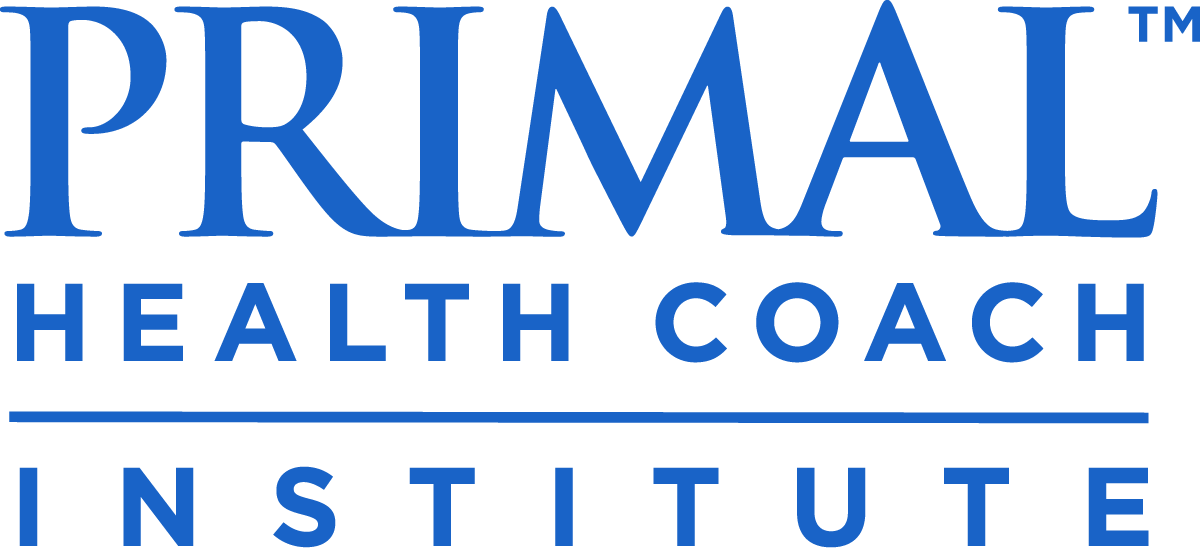
Chances are you got into health coaching to help people, not take a deep dive into marketing. But as a health coach, marketing is a huge part of how you’ll promote yourself and your business to clients.
Over the past few weeks, we’ve talked about everything from building a website to using autoresponder software, and mentioned lots of words and phrases that you may or may not be familiar with.
That’s why today’s post—the last installment in the Primal Health Coach Institute marketing series—is a glossary of 43 must-know marketing terms.
Missed some of our previous marketing posts? We’ve linked them throughout the glossary and at the end of this article.
Glossary
About Page: This is a page on your health coaching website that tells people about you and your business. A well-crafted about page can significantly increase your conversion rates (see below for this definition).
Advertising: A paid or free public announcement. Advertising is what brings your product or service to the attention of potential and existing clients.
Autoresponder: Software like MailChimp, Infusionsoft, and Constant Contact lets you schedule your email marketing campaign so that the right content automatically goes to the right people at the right time.
Blog: What you’re reading right now is a blog. Blogs are basically a series of short articles that aim to inform your audience about something relevant to what your company is all about. It also helps improve the visibility of your website.
Brand Advocate: This is a client or potential client who is a big fan of yours. They support your health coaching practice with positive messages and word-of-mouth referrals without necessarily being compensated for their support.
Close Leads/Close the Sale: When you close the sale, you’re turning a lead (or someone interested in your company) into someone who pays for your health coaching services. Here are 8 tactics for closing leads that we recommend.
Content: Blogs, videos, articles, images, and social media posts are all considered content. You’ll want to create original (new) content as well as share existing content.
Content Marketing: Your long-term strategy for how you’ll roll out your content is called content marketing. Providing relevant information on a consistent basis is key in building trust with your niche audience (don’t worry, this definition is below too).
Conversion Rate: This is the percentage of people who take a desired action on your website. For instance, it might be people who book a Discovery Call or buy a health coaching package from you. They’re converting from a lead to a potential client.
Delight: Going above and beyond the expectations of your clients through premium service. Adding value and ongoing communication is a key factor in retaining current clients and getting word-of-mouth referrals. This is also known as delighting clients.
Direct Traffic: This is the term for when people visit your website directly by typing your URL into their web browser, or clicking through from an email, PDF, or mobile app.
Discovery Call: Most health coaches offer a free 15-20 minute call with new clients to see if the relationship is a good fit. It’s used to quickly understand the client’s health challenges and goals and show them the value of working with you.
Domain: The web address or URL of your website is called a domain, or domain name. It’s one of the first steps you’ll take when building your site and can be purchased from places like GoDaddy, Squarespace, or WordPress.
Email Marketing Campaign: Designed to build trust and develop relationships with clients and prospects, this is a series of emails you’ll send out to your email marketing list. See this post for ideas on what kind of emails to write.
Email Marketing List: Your email marketing list is the list of email addresses you’ve captured from the lead magnet or freebie on your website. You’ll send your email marketing campaign (see above) to this list using autoresponder software.
Email Nurturing: Email nurturing is about building relationships with leads through your email marketing campaign. It’s how you’ll stay connected to them on a regular basis and build trust until they’re ready to work with you. You’re nurturing the relationship through emails.
Freelancer: Someone who works on a contract basis as opposed to working as an employee for a company is considered a freelancer. You can hire copywriters, graphic designers, web designers, social media managers, and more to help create your website or marketing campaign. Read this post for more information on how and where to hire them.
Free Traffic: Anything that doesn’t involve paid advertising is considered free traffic. It’s a great way to generate traffic through methods like blogging, videos, social media, flyers, and referrals when you have limited funds.
Generate Leads: This is the process of attracting people who might be interested in working with you or buying your product.
Google Analytics: Use this tool to get statistics on your website traffic including total visits, average time on sit, and bounce rate. You can also track the demographics of people who visit your site.
Google Search Console: With this tool you can see how well your website is doing when people search for your company or relevant keywords. It also lets you monitor click-through rates from search engines to your site.
Homepage: This is the very first page people come to when they visit your site. The goal of a homepage is to clearly and quickly express who you are, what you do, how you can help, and how to get in touch with you.
Inbound Marketing: Marketing specifically designed to draw in your niche audience is called inbound marketing, and might include blogs, events, webinars, search engine optimization (SEO), and social media posts. Check out this post for more information about using inbound marketing.
Incentive: An incentive is something that you give away in order to entice your client or potential client to take action. It could be a discount on a health coaching service, a kick back on a referral, or a complimentary bonus session with you.
Lead: Basically, it’s a potential future client. For the purposes of our marketing lessons here on the Primal Health Coach blog, it’s someone who you’ll secure into your sales funnel by collecting their contact information through an opt-in or lead magnet (see below) and engage with through email marketing.
Lead Magnet: Also called an opt-in, this is a free incentive like a discount, ebook, or meal planning guide that you offer on your health coaching website in exchange for a person’s contact information, including their name and email address. By “opting-in” and receiving your lead magnet, the person agrees to receive email marketing from you. See this post for examples of recommended lead magnets.
Marketing: Anything that involves attracting prospective clients to your products or health coaching services is marketing. It’s everything a person encounters in relation to your business, from your advertising and your website to what they hear and read about you.
Niche Audience: When you try to target everyone, you end up targeting no one. That’s why having a niche is so important. A niche is a specific audience—a smaller subset of the population with a specific health concern or profile. Not sure how to find your niche? Read this.
Nurturing Sequence: This is the strategy for how you’ll roll out emails to your leads, and in what order. Your nurturing sequence should include the types of emails you’ll send and when to send them.
Organic Traffic: Visitors who find your website organically from using a search engine like Google or Bing are considered organic traffic.
Outbound Marketing: Also called “push” marketing, this refers to any kind of marketing where you initiate a conversation by sending a message out to your audience through things like print or TV ads, billboards, or search engine advertisements.
Paid Traffic: The opposite of organic traffic, paid traffic means people come to your site through advertising that you pay for, such as a boosted Facebook ad or through Google Adwords.
Remarketing: This is a way to connect with people who have visited your website, but have not yet made a purchase or booked a Discovery Call. Remarketing lets you run targeted ads that appeal to that specific audience.
Referral Traffic: Whenever your site is linked to from another website, there’s an opportunity for referral traffic. When this happens, search engines rank your relevance to a specific topic. It’s actually the #1 ranking factor within search engines.
ROI: We may not have covered this term a whole lot in our marketing series, but it’s an important one to know. ROI stands for return on investment, and it relates to the amount you spend on advertising (your investment) in comparison to any income you receive from that investment.
Sales: Everything you do to turn a lead into a paying client is considered sales.
Sales Funnel: Also called a purchase funnel, it’s the awareness, interest, evaluation, and decision phases that your lead goes through on the way to buying your products or services.
SEO: It stands for Search Engine Optimization, and is a way for your online content to rank higher within search engines through the use of specific words and phrases relevant to what your audience is searching for.
Social Media Traffic: The clicks you get from your social media accounts like Facebook and Instagram to your website is called social media traffic. Because these visitors are likely to be familiar with your brand already, this form of traffic tends to have a high conversion rate (see above for that definition if you missed it).
Traffic: In case you don’t have a good handle on this term (or you’re just skimming this post and missed the other references), traffic is the amount of visits from people checking out your health coaching website. As we mentioned, there are several types of traffic including direct, organic, paid, referral, and social media. See how to generate more traffic here.
Website Builder: This is how you’ll create your website, and most are fairly inexpensive and easy-to-use. Some of the top choices are Squarespace, Weebly, Wix, and WordPress.com. Check out this post to read more about building your website.
Web Form: Remember when we were talking about lead magnets and opt-ins? This is the form you’ll add to your homepage that captures contact information from people opting in for your freebie, a.k.a. lead magnet.
Word-of-Mouth: When you delight your clients, they’re more likely to tell their friends and family about their great experience working with you. This is called word-of-mouth.
Conclusion
As you grow your health coaching business, these marketing terms will start to become more and more familiar. For now, you can check out our entire series of marketing posts we’ve shared over the past few weeks to help you learn more about generating leads, closing sales, and everything in between.
Here’s a list of our marketing series posts in order:
- Two Essential Questions You Must Address Before Developing Your Health Coaching Marketing Plan
- How to Use Inbound Marketing to Win Clients
- How to Build an Irresistible Health Coaching Website
- How to Generate Traffic for Your Health Coaching Website
- How to Use Content Marketing to Gain Clients
- 3 Simple Steps for Converting Web Traffic Into Leads
- How to Use Email Autoresponders to Convert Leads Into Clients While You Sleep
- How (and Where) to Hire Freelance Writers, Designers, and Tech Support
- 8 Tactics for Closing the Sale on Your Next Discovery Call
- How to Delight Clients and Keep Them Coming Back for More
Good luck!



